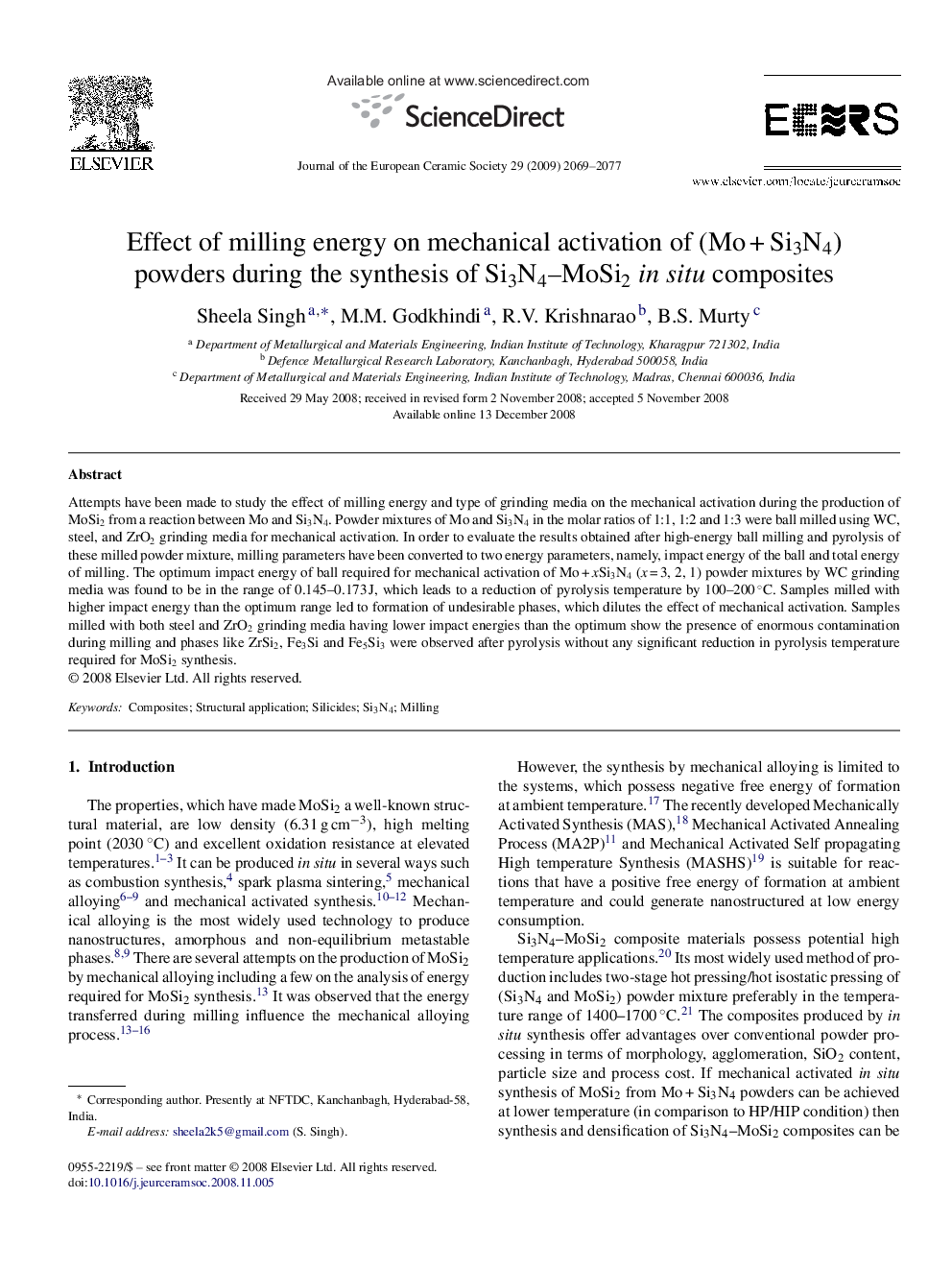| Article ID | Journal | Published Year | Pages | File Type |
|---|---|---|---|---|
| 1475375 | Journal of the European Ceramic Society | 2009 | 9 Pages |
Attempts have been made to study the effect of milling energy and type of grinding media on the mechanical activation during the production of MoSi2 from a reaction between Mo and Si3N4. Powder mixtures of Mo and Si3N4 in the molar ratios of 1:1, 1:2 and 1:3 were ball milled using WC, steel, and ZrO2 grinding media for mechanical activation. In order to evaluate the results obtained after high-energy ball milling and pyrolysis of these milled powder mixture, milling parameters have been converted to two energy parameters, namely, impact energy of the ball and total energy of milling. The optimum impact energy of ball required for mechanical activation of Mo + xSi3N4 (x = 3, 2, 1) powder mixtures by WC grinding media was found to be in the range of 0.145–0.173 J, which leads to a reduction of pyrolysis temperature by 100–200 °C. Samples milled with higher impact energy than the optimum range led to formation of undesirable phases, which dilutes the effect of mechanical activation. Samples milled with both steel and ZrO2 grinding media having lower impact energies than the optimum show the presence of enormous contamination during milling and phases like ZrSi2, Fe3Si and Fe5Si3 were observed after pyrolysis without any significant reduction in pyrolysis temperature required for MoSi2 synthesis.
